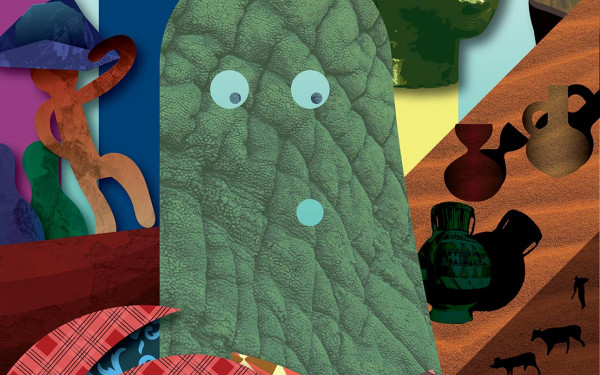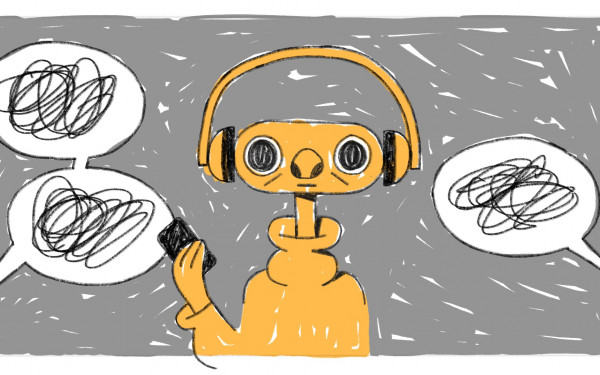Tackling Inclusivity in Concordia’s Art History Classes
It’s Time to Ditch Eurocentric Art Classes
It seems like Quebec’s high school history textbooks offer “skewed, one-sided view of the past”, according to a recent article that appeared in the National Post.
Unfortunately, similar flaws have also been noticed over the past years in university-level art history courses. Former Concordia University students, now working artists in the field, have shared that they experienced underrepresentation in art history classrooms.
The skim representation of cultural communities, and the artwork that was born from these communities, is what keeps the white male-centered field of arts, well, white male-centered. To leave out artists of colour in these courses is to leave out significant aspects of art history altogether.
“What I’m doing is the reclamation of Black Canadians cultural and intellectual, artistic authorship,” said Adrienne R. Johnson, an independent art historian and scholar who holds a Masters of Arts in Art History from Concordia University, and is currently a PhD student at McGill University. Her inspiration came from a specific moment in her undergraduate studies. In 2010, she took the mandatory survey class, Introduction to Art History, at Concordia, which the shocking realisation of the lack of representation of Black artists came to her.
“The very first indication of a Black art production in that class was Stan Douglas’ Nu•tka•, a video installation piece from 1996,” said Johnson. “It’s an excellent piece, but it was very odd to me that, at that point of time, there was nothing else considered to be presented earlier.”
The problem with shutting out people of colour from art history courses, or exhibitions, or museums, is the implication that there is a lack of qualified artists or curators of colour, which is inaccurate to say the least.
Having worked for six years in visual arts through independent curation and various aspects of gallery management, Johnson shares that the erasure of her people’s work is what fueled her passion to uncover it. “I focus on bringing up and bringing awareness to Black canadian art production from the mid-nineteenth to the mid-twentieth century,” said Johnson.
“It’s little known that during colonialism, one of the justifications for animalising Black people and keeping them at a certain level was art and the ability to create fine art when it had been associated with the higher intelligences.” said Johnson. I’m doing my humble part to expand and unearth more examples of black art production to give it justice.”
Johnson’s research in finding Black Canadian art has been published in an edited volume titled Towards An African Canadian Art History, by Charmaine A. Nelson. However, she said her chapter is the “only one who presents Black artists as artists.”
“For students to be able to see and acknowledge that, that type of activity was happening in the Black community in Canada is inspiring and meaningful,” said Johnson.
Art can act as a powerful tool of reclamation, amplifying historically marginalized voices, and can be used to speak out against injustice, abuse, and erasure. Therefore, art history courses should not be a place of exclusion. Johnson’s experience with the mandatory art history class was back in 2010, but Soukayna, a multidisciplinary-artist, shares a similar unfortunate encounter with the course in 2016.
Soukayna is a writer, historian, and curator currently finishing her degree at Concordia University in the joint major of Art History and Film Studies, with a minor in French Literature. Being a queer, Muslim first-generation immigrant from Morocco, she also brought up the same survey class in her criticisms of the program.
“You’re shown all these different examples of Renaissance Art: Italian Renaissance, French Renaissance […] You’re taught about seven different types of Renaissance. Then, you’ve got the chapter on African Art and it’s just six pages. On top of that, it’s mostly just about Benin and Egypt. I just thought, there is a lot missing here,” said Soukayna.
She said she’s made it her “own personal vendetta” to bring up the topic of the nonexistence of the variety of African art and cultures in the survey classes by discussing in various panels.
“I’m inspired by the missing, that I know exists, but that isn’t talked about,” she said.
In the fall of 2017, Soukayna and her colleague Chelsy Monie spoke to professor Maya Oppenheimer about the lack of diversity and their disappointment with the survey class they took back in 2016, then taught by a different teacher. Oppenheimer, who now teaches the Introduction to Art History survey class, invited Soukayna and Monie to give a guest lecture on their concerns about the class in the winter term of 2018. Soukayna took the opportunity to address the “missing parts” of the course, simultaneously encouraging students to do research outside of the curriculum in western academia.
Related Reading
“The first question I asked as [an] ice-breaker was ‘how many of you feel underrepresented in your art history classes?’ and it was both overwhelming and sad to see how many people raised their hands,” said Soukayna.
Students were interested and shared their concerns and thoughts, said Soukayna. Alongside the receptiveness of the teacher, the lecture was interactive and a fulfilling experience to both artists and students.
The good news is that Concordia University has been taking steps in the right direction, as awareness increases and more and more teachers make efforts to include diversity inside Art History classrooms.
“It is impossible to ignore the white male art historical canon that dominates the field,” said third-year Art History student, Mary McNee. “However, over my time here, I have seen a conscious effort from teachers to create a more inclusive curriculum.”
Art History 200: Perspectives on Art History, a mandatory survey course of art history, has implemented over the last few years some changes to create a less western and eurocentric timeline. The class now goes through periods, surveying the globe while being as inclusive as possible.
This model is more academically challenging for students, as there is a wider breadth of material to cover, and broadens horizons for art history to create a more inclusive program.
“The reconstruction of this course seems to fall mostly under the responsibility of the teachers. They are putting in efforts to fit as much diversity into the course as possible. However, the confines of the course established by Concordia as an institution prevent some further diversification of the program,” said McNee.
Concordia also offers several specialized Art History courses, focusing on marginalized artists, and on the mediums most accessible to these groups. Theses courses include Queer Cyber Cultures, Feminism and Art History, Topics in Amerindian and Inuit Art, and Video Art History, to name a few. Students are set up with a wider knowledge of cultures from the new ARTH200 model.
In conjunction, these specialized courses allow students to apply this knowledge to areas of specific interest, while retaining an understanding of art history beyond the traditional canon.
“It should’ve been done way before,” said Soukayna. “A lot of teachers have been advocating for that kind of progress, such as Dr. Alice Ming Wai Jim, who has helped Chelsy [Monie] and I a lot when it came to organizing the different panels that we have moderated and created, and professor Heather Igloliorte,” said Soukayna.
There is still much progress to be made, but I applaud Concordia’s remodelling of the program and specifically the teachers for their continued efforts of inclusion. Artists of colour deserve their recognition, and we all collaboratively need to become advocates, especially academic institutions. It is crucial to generate more discussion to spread knowledge and recognize the variety that art history truly holds. People don’t necessarily know what they don’t know, they need an opportunity to engage. And the most efficient way to do so is in the classroom.


_600_832_s.png)




3__600_375_90_s_c1.jpg)